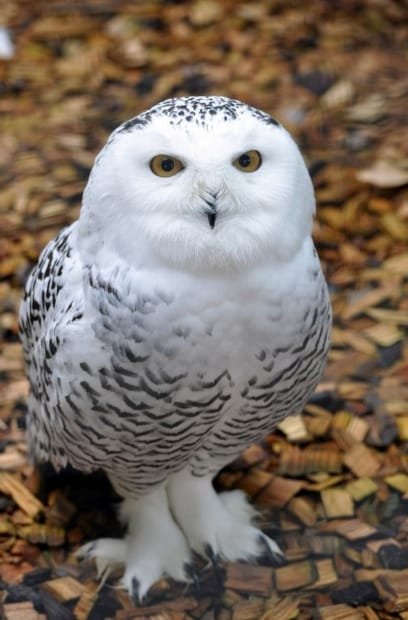
Health Editor’s Note: This statistic should blow your mind….it did mine. That is at least 3 billion birds, dead. This figure reflects the poor state of our earth. Orinthologist Roger Tory Peterson was not wrong when he called birds an ecological litmus paper. Here we offer various habitat situations, grow plantings that birds can use for food, and enjoy keeping the bird feeders stocked with black oil sunflower seeds, suet feeders and as mentioned previously, the humming bird feeders full. Yes, a few hummers are still here and still using the feeders as well as the butterfly bushes, trumpet blooms, hibiscus blooms and whatever else they can find to stick their long beaks into. In return our immediate world is full of colorful life….Carol
North America Has Lost Nearly 3 Billion Birds Since 1970
by Rachael Lallensack Smithsonian.com
It’s hard to imagine a place in the world where you can’t find a bird—a place where you can’t look to the sky and see one flying overhead, or see one hop across the sidewalk, or close your eyes and hear at least one singing its song.
Take the Red Knot, a shoreline bird that migrates to the Delaware Bay in summer to indulge on horseshoe crab eggs until it’s fat enough to fly all the way to the Arctic Circle to breed. Or consider the Baltimore Oriole, a songbird that breeds in summer from Louisiana up along the U.S. East Coast and into Central Canada, then spends its winters in the Caribbean, across Central America and down to the northern regions of South America.
Birds thrive in grasslands, deserts, mountains, forests, tundra and along the oceans’ coasts. But the skies have grown more silent in recent decades. Since 1970, North America has lost more than 2.9 billion birds, according to a study published today in the journal Science. In less than half a century, the avian population of the continent has declined by some 29 percent, or more than one in four birds.

Carol graduated from Riverside White Cross School of Nursing in Columbus, Ohio and received her diploma as a registered nurse. She attended Bowling Green State University where she received a Bachelor of Arts Degree in History and Literature. She attended the University of Toledo, College of Nursing, and received a Master’s of Nursing Science Degree as an Educator.
She has traveled extensively, is a photographer, and writes on medical issues. Carol has three children RJ, Katherine, and Stephen – one daughter-in-law; Katie – two granddaughters; Isabella Marianna and Zoe Olivia – and one grandson, Alexander Paul. She also shares her life with her husband Gordon Duff, many cats, and two rescues.
ATTENTION READERS
We See The World From All Sides and Want YOU To Be Fully InformedIn fact, intentional disinformation is a disgraceful scourge in media today. So to assuage any possible errant incorrect information posted herein, we strongly encourage you to seek corroboration from other non-VT sources before forming an educated opinion.
About VT - Policies & Disclosures - Comment Policy




Here in Glen Burnie, insects are gone except Ants, Crickets and House Flies. If you have Camel Crickets in your basement try sticky traps baited with Cheetos, really works! No song birds, English Sparrows, Doves, some Robins. Very sad. I haven’t seen an Oriole in ten years. Of course Orioles are usually high up in the trees. Southern Maryland had a plethora of bugs and flying critters last time I was in the Solomons. Really comforting to see some grasshoppers. Oh well between the radiation, G5, Monsanto (Bayer) and what ever the heck they are spraying on us daily… perhaps the next group will keep some of us in zoos for sh-ts and grins.
I’ve noticed far less insects, as well. Maybe it’s my imagination, but far more UV seems to get through from the Sun.
The pear tree here only had three pears on it this year. Last year there were plenty for both the deer and for us to enjoy. Lack of pollination would be the cause because we did not receive a frost although the weather during the blooming time was very rainy and cool. As the summer has progressed I am seeing plenty of bees and insects (especially the lousy mosquitoes) and with improved bird feeders that do not allow for constant draining by the squirrels and the addition of suet feeders which I had never tried before we have had tons of birds. This is only our second summer here so time will tell. Sometimes all we can do is to make sure our immediate surroundings are favorable to birds, critters, insects, and plant life. I feel that when the birds, especially the hummers, that leave for migration are ready to go, they will be as well fed as humanly possible.
Open your eyes, look up at the tracks in the sky… when they spray us with their geoengineering cocktails the insects die first, then the birds, and it works it through the plants and crops and all the way up the food chain. Why would Monsanto have a parent for aluminium resistant seeds when that’s not a naturally occurring element?? Obviously one of the cocktail ingredients? Depopulation agenda and the CAUSE of freak weather.
Comments are closed.